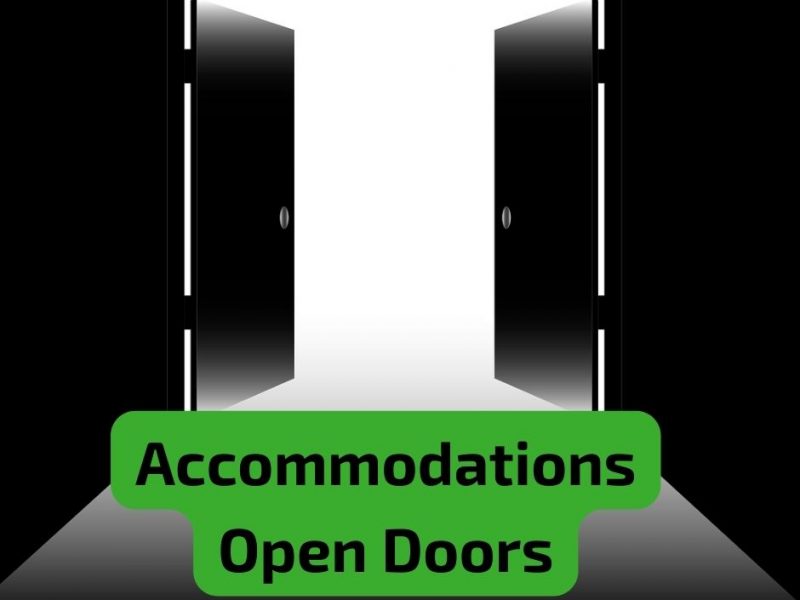Creating an inclusive workplace is a journey of understanding and action, especially when it comes to accommodating disabilities. With the Americans with Disabilities Act (ADA) providing a legal framework, it’s crucial for employers, HR professionals, and non-profits to understand and implement these guidelines effectively. This primer for accommodating disabilities in the workplace aims to provide a look at how to make workplaces more accommodating and inclusive for individuals with disabilities.
Understanding the ADA and Its Implications
Title I of the ADA marks a significant milestone in employment law, mandating equal employment opportunities for people with disabilities. It underscores the necessity for employers to provide reasonable accommodations to qualified employees or job applicants with disabilities, barring instances where this would cause significant difficulty or expense. Understanding the ADA is not just about compliance; it’s about embracing the spirit of inclusivity and equal opportunity.
Identifying and Providing Reasonable Accommodations
At the heart of accommodating disabilities in the workplace is the concept of ‘reasonable accommodation.’ This term refers to necessary and appropriate modifications or adjustments. Not only is this a legal requirement, but it is also a moral imperative to support diverse talents. Examples include job restructuring, modified work schedules, and the provision of assistive devices or services like sign language interpreters. Accommodations should be determined on a case-by-case basis, considering the unique needs of each individual.
The Role of Employers in Creating an Inclusive Work Environment
Employers bear the primary responsibility for creating an inclusive work environment. This involves not only understanding the job requirements but also being flexible in modifying them to enable an employee with a disability to perform their job effectively. An interactive process between the employer and the employee is crucial. It involves direct communication, openness to feedback, and a collaborative approach to finding solutions that work for both parties.
Navigating the Challenges of Accommodation
One significant challenge for employers is determining when an accommodation becomes an ‘undue hardship.’ Factors like the financial cost, the size of the business, and the nature of the operation must be considered. In such scenarios, consultation with bodies like the Equal Employment Opportunity Commission (EEOC) can provide clarity and guidance. Remember, the goal is to find a balance that respects the rights of the employee while considering the employer’s capacity.
What Are a Few Examples of Accommodating Disabilities in the Workplace
Remember that accommodations are specific to each person, but a few examples are:
- Hiring sign language interpreters
- Providing assistive technology, like special keyboards, large monitors etc.
- Allowing a service animal to come to the office
- Adjustments to work hours or scheduling breaks
- Modifying the work environment, like clearing halls, removing tripping hazards, adding ramps
Inclusive Recruitment Practices
Inclusive recruitment is an integral part of accommodating disabilities in the workplace. This means ensuring that job postings are accessible, interview processes are accommodating, and there is a conscious effort to welcome candidates with disabilities. Such practices not only diversify the talent pool but also send a strong message about the company’s commitment to inclusivity.
Mental Health and Well-being
Accommodating disabilities also involves a focus on mental health and well-being. Employers should be aware of and sensitive to the mental health needs of their employees, providing support and accommodations where necessary. This could include flexible work schedules, telecommuting options, or access to mental health resources.
The Role of Technology
Technology plays a pivotal role in accommodating disabilities. From screen readers and voice recognition software to ergonomic workplace solutions, technological advancements have opened new doors for employees with disabilities to thrive in their roles.
Do You Need Some More Information About accommodating Disabilities in the Workplace
Embracing disabilities in the workplace is more than fulfilling legal requirements; it’s about enriching our workforce and society. By understanding legal obligations, implementing strategic practices, and promoting an inclusive culture, businesses can become more diverse, innovative, and successful. Let’s commit to breaking barriers and championing inclusivity in every aspect of our work life.
Reflect on your company’s approach to disabilities. Are there areas for improvement? Does your company need more information on how to support disabilities in the workplace? Contact The Information Tamer and let’s chat! Please note I am not an expert on accommodations or legal obligations. But I can provide you with information and help with your processes.
FAQs
What are some common misconceptions about accommodating disabilities in the workplace?
Common misconceptions include the belief that accommodations are always expensive and that individuals with disabilities are less productive. Many accommodations are cost-effective and can even improve overall workplace efficiency. Employees with disabilities often bring unique perspectives and skills that enhance team performance.
How should an employer approach a situation where they’re unsure what accommodations are needed?
The best approach is to engage in an open and respectful dialogue with the employee. Employers should ask directly about the specific needs and preferences for accommodations. A suggestion is to make the question part of the onboarding process for ALL employees. A question as simple as “is there anything you need to make it possible for you to do your day-to-day work.”
It is also beneficial to consult resources like the Job Accommodation Network (JAN) for expert advice and suggestions.
Can small businesses receive any support or incentives for accommodating employees with disabilities?
Yes, small businesses can access various supports and incentives. For instance, in the United States, the Small Business Administration (SBA) and certain tax incentives can assist with the costs associated with making accommodations. These supports aim to make it easier for small businesses to provide necessary accommodations without undue financial strain.
In addition, here in Minnesota there are specific funding sources available. Presently the first and only state with a dedicated pilot program for reasonable accommodation funding. The Minnesota Department of Employment and Economic Development (DEED) Employer Reasonable Accommodation Fund (ERAF) creates a central fund where small to mid-sized Minnesota employers can request reimbursement for expenses related to providing reasonable accommodations for job applicants and employees with disabilities.


 Why You Need a Fractional COO
Why You Need a Fractional COO
